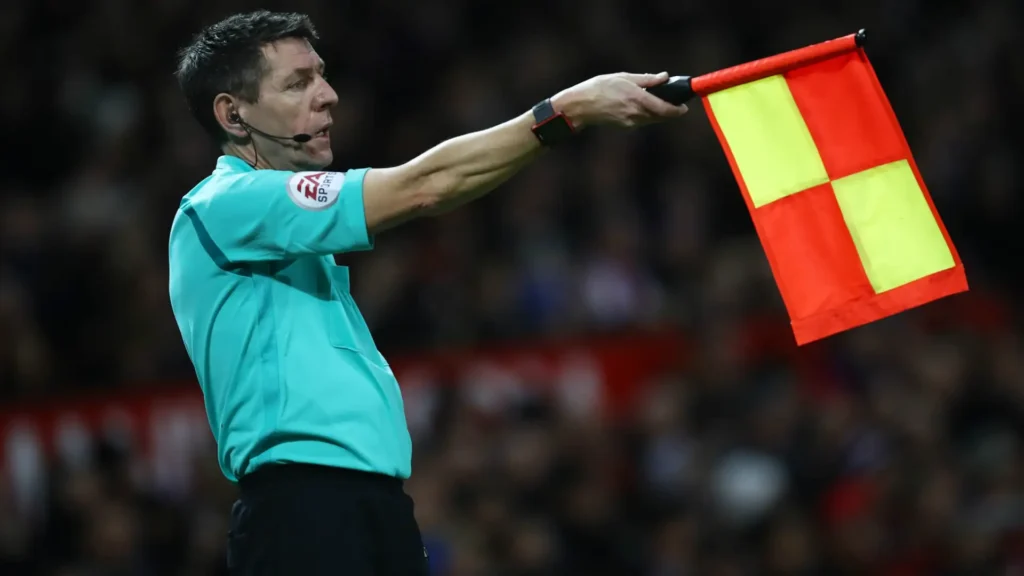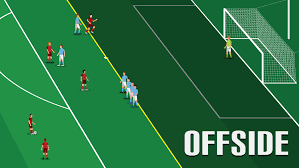The offside rule is probably one of the most contentious and misunderstood regulations in football. Many players, fans, and pundits have long been engaged in heated debates on the subject. While its simple purpose is to stop “goal-hanging” and play fairly, this regulation has remained one of the most confusing and controversial rules for decades.
In this blog, we’ll explore the offside rule in depth, break down its intricacies, and address why it remains a hot topic in the football world. Whether you’re new to the sport or a seasoned fan, this guide will help demystify one of football’s most complex rules.
What Is the Offside Rule?
At its heart, the offside rule ensures that attacking players do not gain an unfair advantage by positioning themselves too close to the opposition’s goal without enough defensive presence.

The Official Definition
A player is in an offside position if:
They are nearer to the opponent’s goal line than both the ball and the second-last defender when the ball is played to them.
But simply being in an offside position is not a foul. A player is only penalized if, in the referee’s judgment, they are:
Actively involved in play.
Interfering with an opponent.
Gaining an advantage from their position.
This means a player can be in an offside position but not commit an offside offense if they aren’t directly involved in the play.
Breaking It Down: Key Elements of the Rule
1. The Offside Position
There are three elements to determine whether a player is offside.
Player Position: The attacking player must be in the opponent’s half.
Defender Position: At least two opponents must be between the attacking player and the goal line when the ball is played, often the goalkeeper and one outfield player.
Ball Position: The attacking player must be ahead of the ball.

2. The Timing of the Pass
A player’s positioning is assessed as the ball is played to them, not when they gain possession of it. Such timing often complicates decision-making, especially in a quick play.
3. Offside Exceptions
There are conditions where a player cannot be considered offside:
In Their Half: The rule only applies on the opponent’s half.
On a Goal Kick, Throw-In, or Corner: These re-starts relieve players of being considered offside.
If In Line with the Second-to-Last Defender or Ball: In line means not being offside.
Why Is the Offside Rule Important?
The offside rule serves as an essential tool to achieve equilibrium and justice in the game of football. The lack of such a rule would lead to “goal-hanging,” where attackers just stay by the goal, awaiting long balls to arrive. It would thereby lower the level of tactical intricacy in the game.
Tactical Impact
Defensive Strategies: The rule makes it possible for defenders to play in a high line, thereby locking attackers in offside positions. This creates a tactical battle between defenders and forwards.
Attacking Plays: The runs of forwards have to be timed perfectly so that the game becomes more dynamic and skillful.
Promotion of Team Effort
Through the punishment of lone attackers who wait near the goal, the offside rule promotes coordinated efforts by teams in building attacks.
Role of Technology in Offside Decisions
Offside decisions have been completely changed with the advent of technology, especially the introduction of VAR, or Video Assistant Referee.
VAR and the Offside Rule
The VAR uses video footage to review offside calls, providing a level of accuracy that has never been seen before. Lines are drawn on the screen to determine the exact position of players at the moment the ball is played.
Whereas VAR has reduced human error, it has also introduced new controversies:
Marginal Decisions: Goals are disallowed for millimeter differences, and there is a debate about whether such precision is in the spirit of the game.
Delays: VAR reviews can disrupt the flow of the game, frustrating players and fans.
Semi-Automated Offside Technology
FIFA has experimented with semi-automated systems that use sensors and AI to detect offside positions in real-time. These innovations aim to minimize delays while ensuring accuracy.
Why Is the Offside Rule So Confusing?
The offside rule is inherently ambiguous because of the fine line involved in its interpretation. The following are some of the common causes of misunderstandings.
1. Active Involvement
To determine if a player is offside, they must interfere with play or gain an advantage. For instance,
If a player does not touch the ball but obstructs a defender, is he offside?
What if a player moves towards the ball but fails to reach it?
2. Quick Plays
Football moves fast, and offside decisions are often a split second. It is difficult to find exactly when the ball was played as well as the exact position of the player at the same time, even for experienced officials.
3. Developing Concepts
The offside rule has undergone changes throughout the history as its application has continued to shift. The introduction of “phases of play” and clarifications on what is classed as “interference” have layered depth onto this rule.
Misconceptions that Are Pervasive
Let’s clear a few myths and misconceptions on the offside rule:
“If a Player is Behind the Goalkeeper, They’re Always Onside.”
This is false. The offside rule looks to the second-to-last defender, not necessarily the goalkeeper. If there is a defender closer to the goal, then the player is still in an offside position.
“A Player Can’t Be Offside If They Don’t Touch the Ball.”
Not always. A player might be booked in case their action or movement was interfering with another player, but without actually reaching the ball.
“VAR Fixes All Offside Questions.”
Not fully. Even though the accuracy is greater, the aspects of interpretation will still be problematic, especially what constitutes “actively involved”.
Ways to Follow Offside as an Audience
A few ways an audience can start to better follow the offside rule:
Slow-motion replays and diagrams show offside decision-making.
Follow the Ball and Defenders: Keep an eye on the timing of the pass and the positioning of defenders.
Learn From Experts: Listen to commentary or analysis that explains why a decision was made.
Over time, you’ll develop an intuitive sense for spotting offside situations.
The Future of the Offside Rule
Debates about the offside rule’s fairness and implementation have sparked calls for reform. Suggestions include:
Wider Margins: Permitting wider latitude in deciding marginal plays on the attack.
Automated Systems: Technology refinements toward a faster, consistent call.
Rule Changes: De-emphasize the subjective interference rule.
It is not a perfect answer but part of a never-ending development of the sport.
Conclusion
Offsides is part of the structure of football as a game in terms of formation, fairness, and flow; the subtleties of offside can indeed be confusing sometimes, but appreciating its simplicity brings out further meaning to a complex game of football.
As technology continues to influence decision-making, and debates about its application persist, the offside rule remains an integral—and fascinating—part of football’s enduring appeal. Whether you’re watching from the stands or playing on the pitch, knowing the rule inside out will enhance your connection to the beautiful game.






